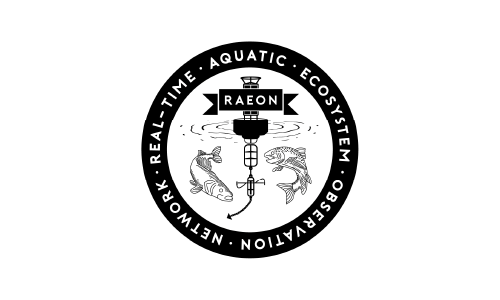Along the northwest coast of Lake Erie, a series of buoys monitor the conditions and report in near real-time. The buoys themselves are not novel, despite collecting a suite of water quality information; however, the partnerships that drive the deployments and utilize the data are quite impressive.
The Real-Time Aquatic Ecosystem Observation Network, or RAEON , provides infrastructure, staff, and data management that allow Canadian researchers to carry out cutting-edge research on the Great Lakes. As part of the Global Water Futures Observatories (GWFO), Canada’s largest freshwater research network, RAEON contributes to a broader national effort to advance freshwater research and support informed decision-making. It is a model that has been quite successful in filling an identified need for the observing ecosystem – a way to utilize sensors and observing platforms through equipment and cost-sharing.
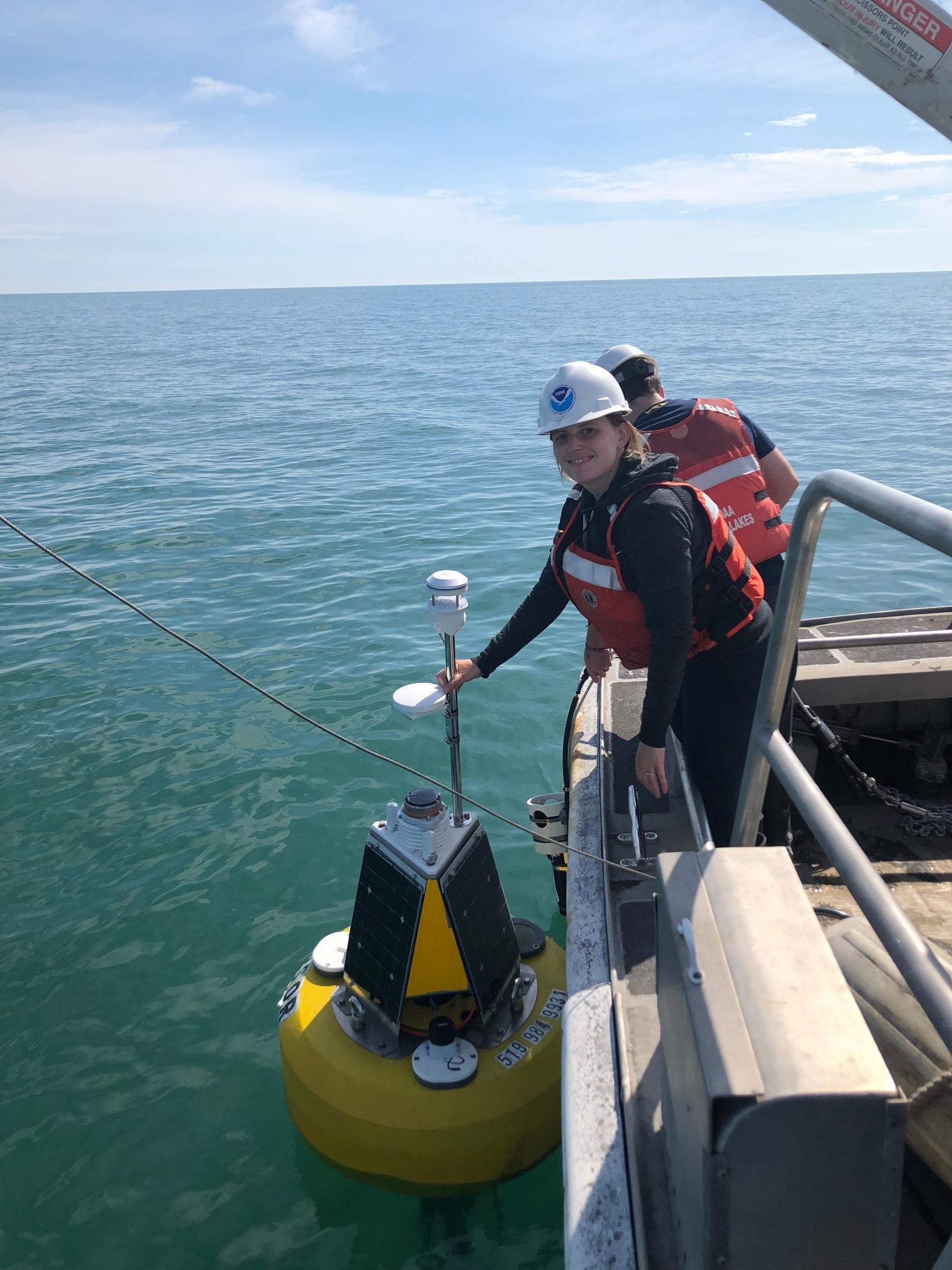
The network of RAEON observing platforms that gets deployed is comprised of near real-time and non real-time sensors. The compilation of these is designed to answer specific questions, help with management decisions, and further understanding of the Great Lakes. Additionally, the RAEON observing network is a crucial part of the overall Great Lakes observation network (which you can see on Seagull).
Each summer, RAEON’s network includes anywhere from 5-7 buoys, 2-4 gliders, and a number of other fish tracking equipment, which spans more than just Lake Erie.
Let’s dive in!
Buoys of RAEON
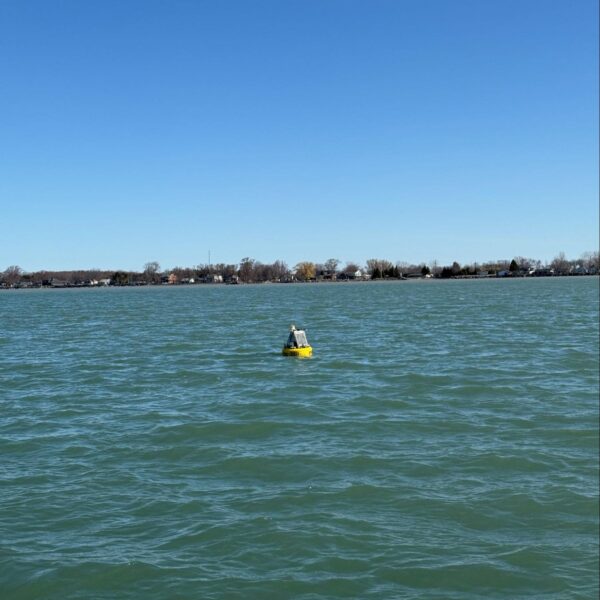
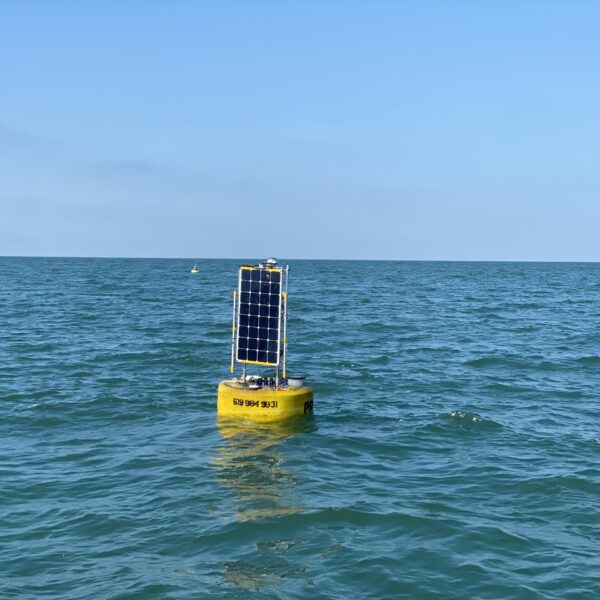
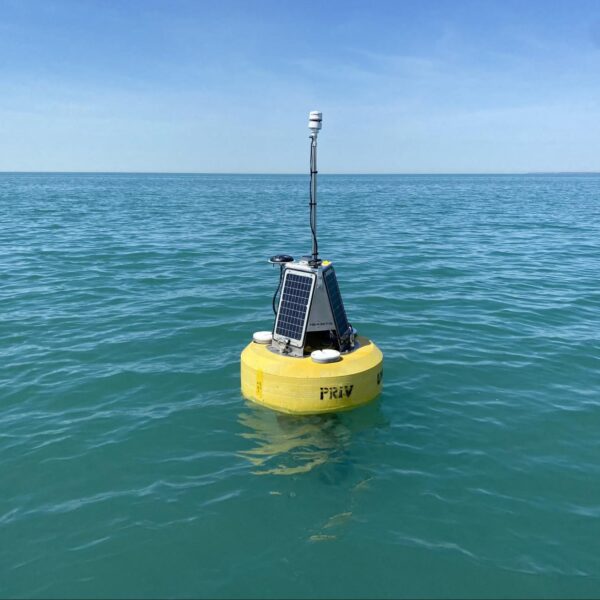
A number of the RAEON buoys use a relatively unique (at least to the Great Lakes) method for data collection. Instead of one mooring per buoy that has all the sensors and accessories, some RAEON buoys are actually composed of two moorings. The first, a central buoy, is equipped with a communication modem, data logger, and some sensors. Within 50 meters, a sensor line is deployed to collect water quality information throughout the water column. These water quality sensors communicate to the buoy via underwater acoustics for data logging and sharing in near real-time. This year, researchers have added webcams to several RAEON buoys to provide visual imagery to view current conditions.
Since the formation of RAEON, there have always been RAEON buoys in Lake Erie. More recently, deployments have expanded to eastern Lake Huron. The exact locations and number of buoys in each Lake can change year-to-year depending on feedback from the partners that RAEON works with. These changes are reflected in the names. For instance, this year RAEON worked with Environment and Climate Change Canada (ECCC) to adjust the location of one buoy (UWRAEON7-ECCC) that is a shared operation. ECCC wants to track formation of harmful algal blooms in Lake Erie and they choose the buoy location based on past ECCC modelling work using LIDAR.
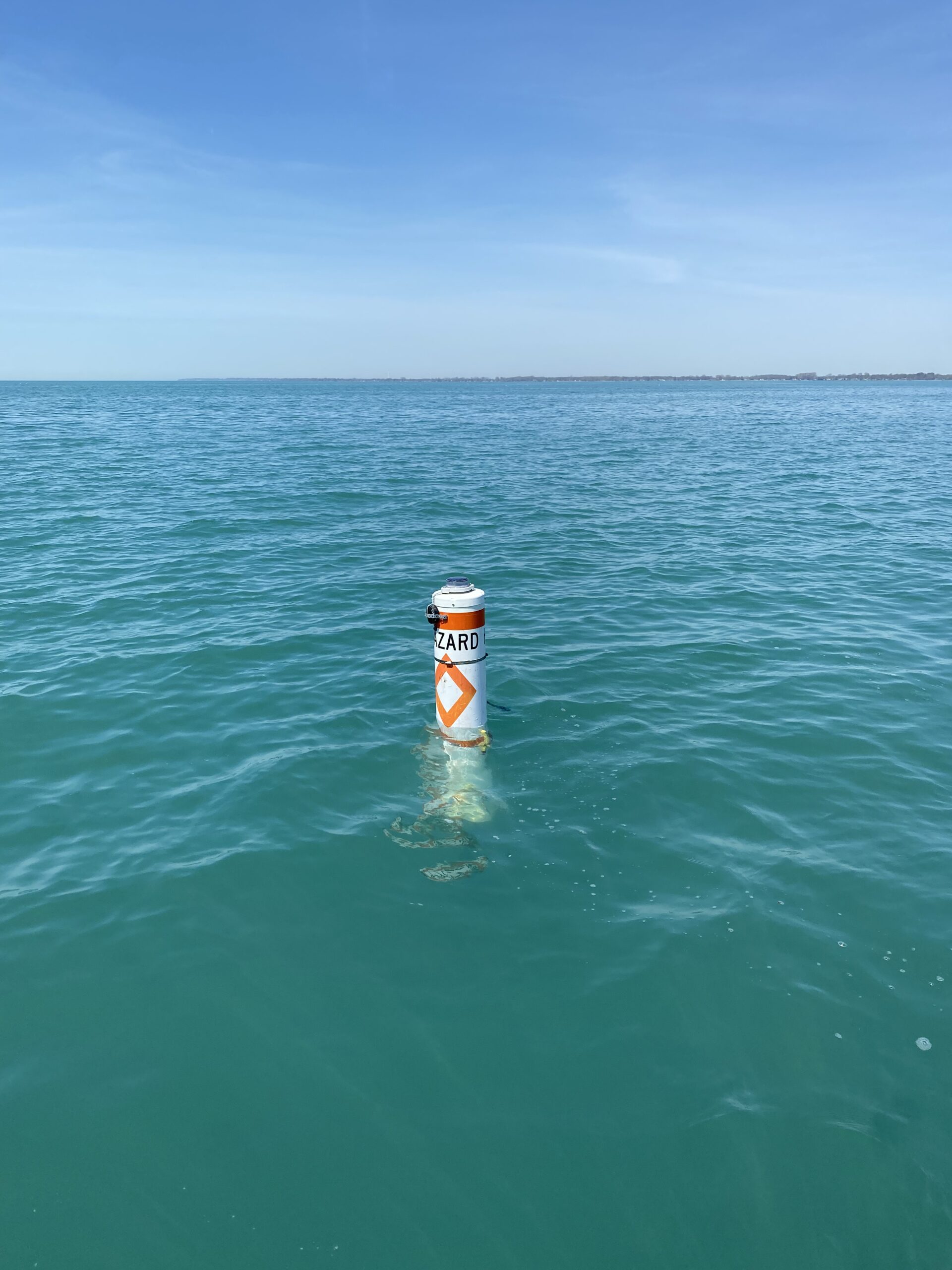
RAEON also collaborates with the University of Waterloo’s Coastal Research Group, deploying between 2 and 3 buoys every year. These buoys are used to track current direction/speed and wave action and help to understand coastal erosion. Buoy locations change year-to-year depending on the study. For example, in 2025 there is a buoy in Lake Huron, just outside of Southampton, Ontario, working to provide data for coastal erosion in that area.
All of the data collected is available to researchers and the public on RAEON’s customized Seagull portal: raeon-seagull.glos.org
Gliders
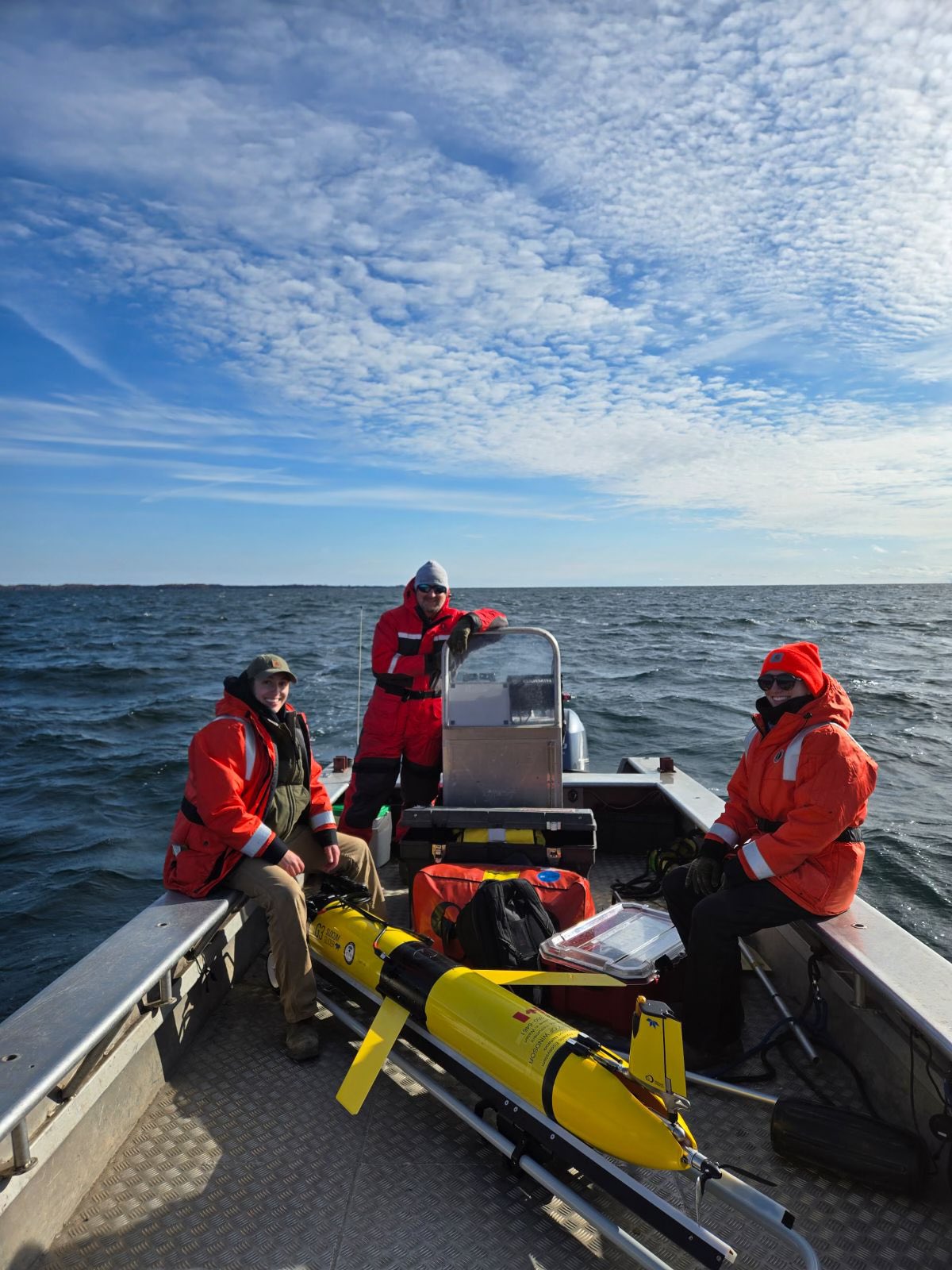
RAEON operates more than buoys, however; in fact, researchers are monitoring a small fleet of underwater gliders that are traveling through the Great Lakes. Gliders can operate in conditions that are unsafe for human crews, enabling continuous data collection when traditional fieldwork is limited. These gliders can transmit data in real-time, allowing researchers to monitor current environmental conditions and track fish movements as they occur. In 2024, a new type of sensor was integrated into the science computers for their gliders – an acoustic zooplankton fish profiler, or AZFP. This allows for acoustic detection of zooplankton and fish directly from a glider, which is much smaller, quieter, and more nimble than traditional methods. It also provides the data in near real-time, facilitating rapid response of adaptive sampling strategies. Of the six missions planned for 2025, four are designed around this new AZFP.
Partners have shown interest in using RAEON equipment, specifically during shoulder seasons (i.e., winter-spring and fall-winter transitions). These periods are critical for fisheries monitoring but are often marked by rapidly changing weather conditions that make traditional fieldwork challenging. As such, gliders offer a valuable and reliable alternative for data collection during these times. Additionally, given the significant investments made by fisheries managers in both Canada and the United States (i.e., Ontario Ministry of Natural Resources, U.S. Fish and Wildlife Service, and U.S. Geological Survey) to support commercial fisheries in the Great Lakes, equipping a glider with acoustic telemetry receivers offers a valuable opportunity to monitor the post-stocking movements of fish. This approach provides critical insights into survival outcomes following stocking events, which can inform future fisheries management decisions.
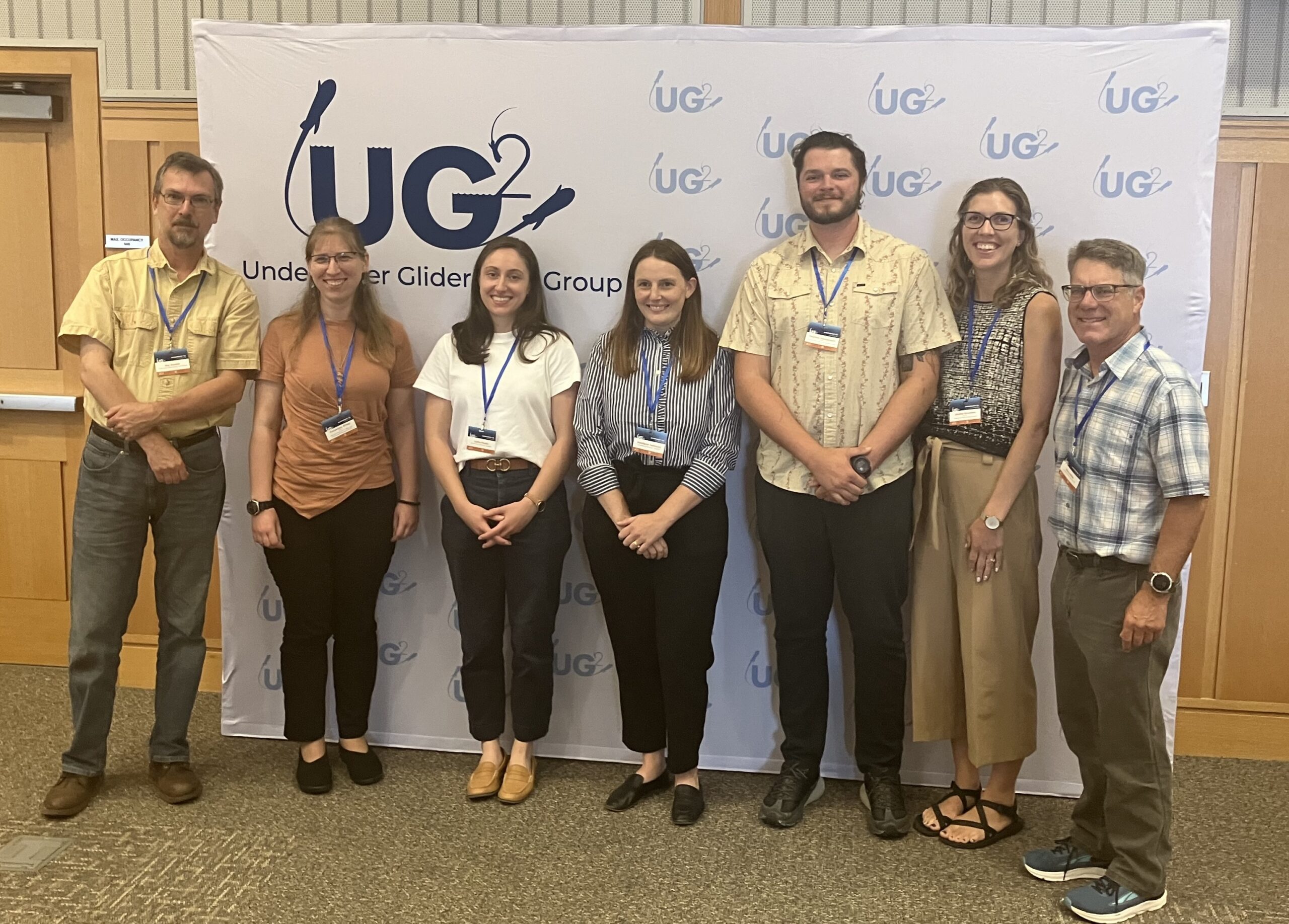
RAEON’s Lydia Paulic (Glider Technician) and Katelynn Johnson (Research and Operations Director), pictured third and fourth in from left, at the Great Lakes Underwater Glider Group’s 2024 meeting. Photo provided by Katelynn Johnson.
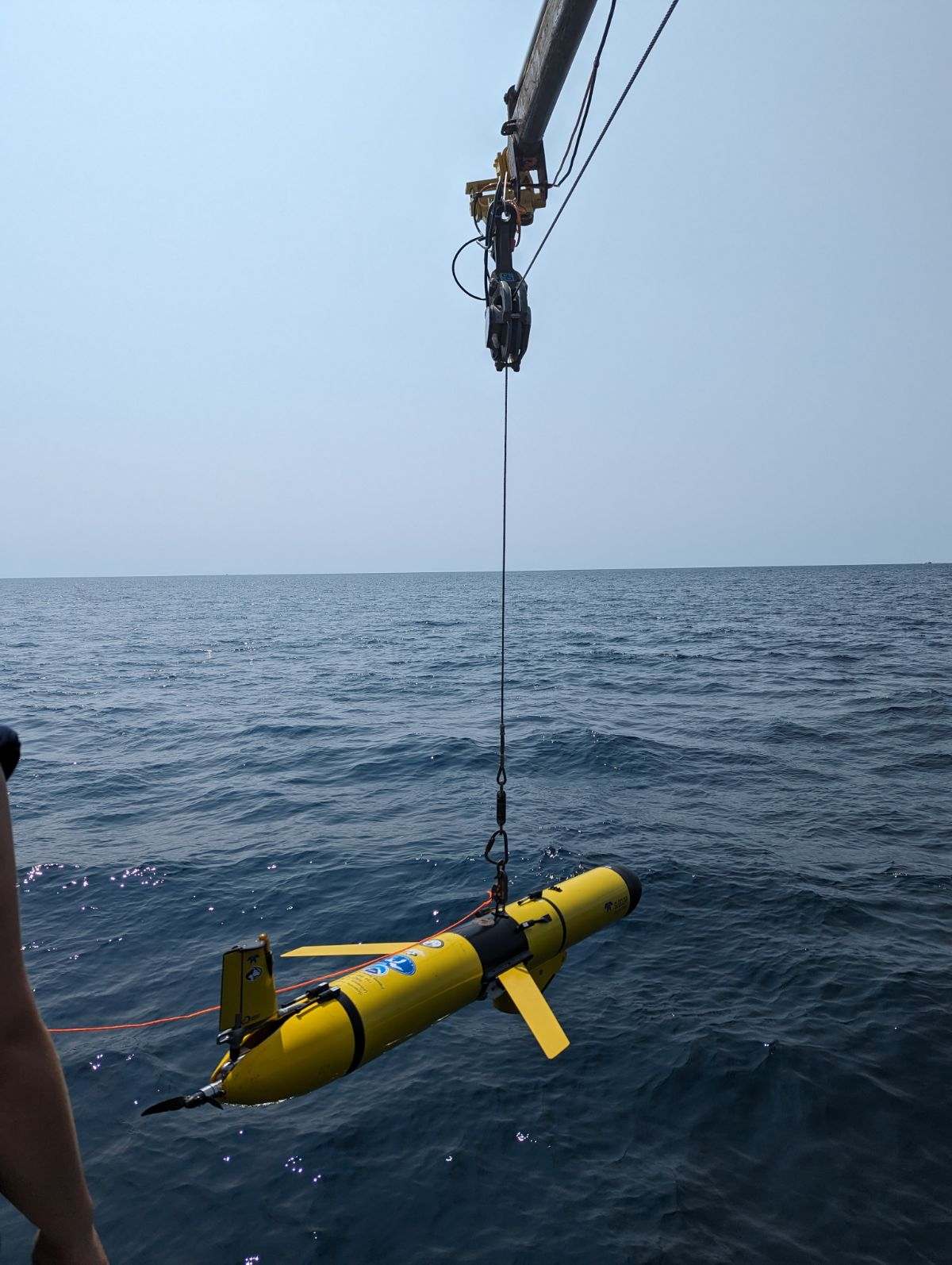
The RAEON Way
RAEON functions under a unique model that has created opportunities and interest throughout the Great Lakes region. Sitting at the University of Windsor, RAEON includes a variety of deployable technologies that members of the research community can use through cost- and data-sharing agreements. This arrangement is a very efficient way to allow for 1-3 years of experiments to occur and then have the same sensors utilized by another group. This sharing of equipment facilitates broader collaboration and enables a greater volume of research than would be achievable through independent efforts alone. Essentially, it’s a library of technology that may otherwise be inaccessible to most groups.

RAEON’s work is driven by partner priorities and they are willing to adjust plans to meet multiple needs when possible. They are recognized regionally for the advances in understanding they have brought to the Great Lakes. Recently, they also received national recognition as they competed and were awarded a partnership in the Global Water Futures Observatories.
